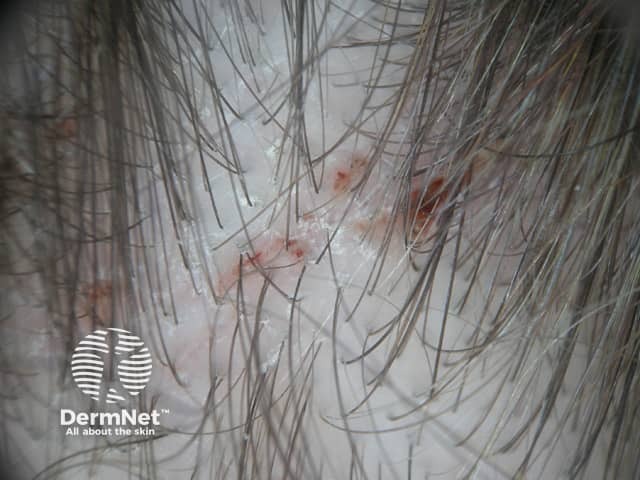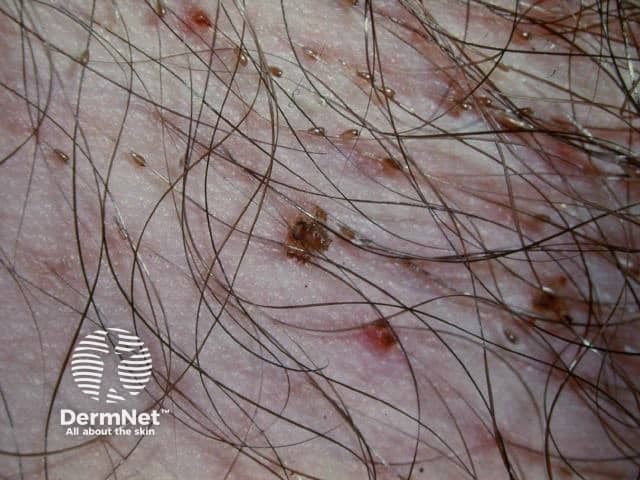Main menu
Common skin conditions

NEWS
Join DermNet PRO
Read more
Quick links
Louse infestation — extra information
Louse infestation
Author: Steven Lamb MBChB, Department of Dermatology, Waikato Hospital, Hamilton, New Zealand, 1998. Updated by Vanessa Ngan, Staff Writer, February 2014.
What is a louse?
A louse (plural lice) is a small insect that lives on human hair and clothing and can just be seen with the naked eye. Lice are well camouflaged and reflect the colour of the surroundings.
The medical term for an infection or infestation with lice is called pediculosis.

Head lice

Head lice

Head lice
Lice are ectoparasites that live on the human body. They are wingless and have six legs on which are attached strong claws that they use to grasp on tightly to hair shafts or clothing fibres. With their piercing mouthparts they puncture the skin to feed on human blood. They also inject a saliva which causes itching. Lice can survive for up to 10 days without feeding if they become detached from their human host.
There are three types of lice that infest humans:
- Pediculus humanus var. capitis — head lice
- Pediculus humanus var. corporis — body lice
- Phthirus pubis — pubic lice.
Head lice, the most common infestation in humans, are colloquially known as cooties and their eggs are called nits. Pubic lice are smaller than the other two species, and have a short body resembling a crab — hence the common name for pubic lice, 'crabs'.
On DermNet
- Arthropod infestations online course for health professionals
- Acute hair matting
- Arthropods, helminths and other bugs
Other websites
- Lice — Medscape Reference
- Lice — emedicinehealth
- Patient information: Lice (The Basics) — UpToDate (for subscribers)
- Head lice — American Academy of Dermatology
